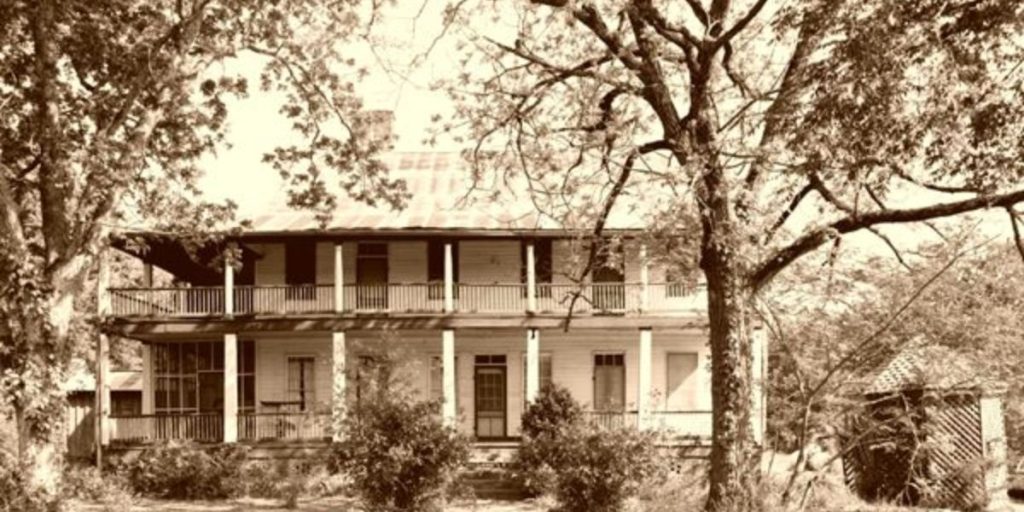Across the United States, there are numerous abandoned towns, which serve as quiet reminders of communities that once flourished but now remain still and forgotten. These abandoned towns intrigue us, providing a look into a history rich with hope and advancement, now frozen and maintained in a condition of stillness. One of the overlooked locations is a lesser-known town in Mississippi, a site that carries tales of wealth, struggle, and eventual neglect. Discovering a town fulfills our curiosity and links us to the vibrant history that has influenced our country.
The Abandoned Town of Rodney
Located in Mississippi, the town of Rodney was once a thriving river port. Established in the early 1800s, Rodney emerged as an important center for trade and commerce on the Mississippi River. The advantageous position established it as an important participant in the cotton trade, drawing in traders, agriculturalists, and businesspeople from various regions. By the 1850s, Rodney had a population of almost 4,000 people, featuring churches, schools, and businesses that served its expanding community.
But, things started to change for Rodney. The Civil War caused major disruptions, affecting trade and leading to extensive destruction. A series of natural disasters sped up the town’s decline. A major flood in 1863 changed the path of the Mississippi River, cutting off Rodney and leaving the town isolated. Rodney struggled to bounce back and by the early 20th century, it was mostly deserted.
Highlights of the Town and Its Landmarks
Today, Rodney reflects a time long gone, with its streets and buildings telling tales of history. As visitors stroll through the town, they can observe the traces of its former magnificent architecture. The Rodney Presbyterian Church, constructed in 1831, stands as a notable landmark, its Greek Revival architecture reflecting the town’s historical wealth. The church remains impressively preserved, standing out against the surrounding deterioration.
Another significant site is the Rodney Baptist Church, built in 1850. The church, despite its current condition, showcases a Gothic Revival design and a tall spire that reflect the town’s architectural history. The old Masonic Lodge, now in ruins, reflects the town’s past vibrant social scene. The structures, together with the remnants of residences and shops, provide a striking view into Rodney’s history.
Individual Experiences and Narratives
Rodney’s tale goes beyond mere structures and trade; it encompasses the lives of its residents. The Reverend Zebulon Butler was a significant member of Rodney’s religious community. His sermons attracted many people, and his impact reached far beyond the church. Stories of his commitment and generosity continue to echo among those who explore the town’s past.
Guests at Rodney frequently contribute their personal tales, enhancing the vibrant collection of narratives. Historians share stories of Union and Confederate soldiers who moved through the town during the Civil War, leaving behind artifacts and narratives of conflict. Today’s adventurers describe a hauntingly beautiful environment, as nature gradually takes over, intertwining vines with the decaying structures.
Understanding Abandonment

Rodney’s decline unfolded gradually and involved various factors. The Civil War had a significant economic impact, leaving the town to face challenges in its efforts to rebuild after the devastation. The change in the Mississippi River’s path significantly impacted the area, severing the main trade route and leaving the town isolated. Efforts to rejuvenate Rodney via agriculture and railroads faced challenges, as bigger cities with superior infrastructure attracted potential investors and residents.
Rodney’s abandonment was influenced by environmental factors as well. Ongoing flooding and subpar soil conditions have created significant challenges for farming. Furthermore, modifications in transportation paths, especially the growth of railroads, reduced the town’s significance as a river port. By the early 1900s, numerous residents of Rodney had relocated in search of new opportunities.
Overview of the Town’s Situation
Today, Rodney may not be what it once was, but its historical importance is still very much intact. The town’s remaining buildings, despite their age, provide a touching look back at history. There are ongoing initiatives to safeguard the remnants of Rodney, with historical groups and community volunteers dedicated to upholding the condition of its structures.
Rodney is open for visitors, but there are some hurdles to consider. Travelers should be aware that the routes to the town may be challenging, especially following rainfall, and it’s wise to prepare in advance. Even with these challenges, Rodney draws in history lovers, photographers, and anyone looking to connect with a slice of Mississippi’s history.
Final Thoughts
Rodney, Mississippi, represents more than an abandoned town; it is a significant part of America’s broader narrative. The ups and downs illustrate the larger economic, social, and environmental influences that have molded our country. Keeping places like Rodney helps us link to our history, recognize the struggles of previous generations, and value the strength of communities.
Discovering Rodney provides a chance to revisit history, allowing you to stroll through the same streets and enter the same buildings that once buzzed with life and energy. By revealing and sharing the tales of these locations, we pay tribute to those who preceded us while deepening our own comprehension of the world around us. If you’re intrigued by the secrets of history, a trip to Rodney might be just what you need—a deserted town that still holds many stories to share.